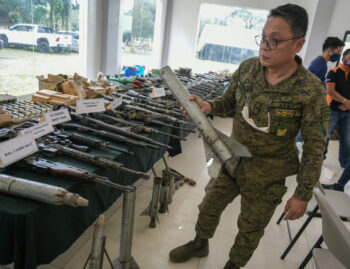DAVAO CITY (MindaNews/13 November) – Local cacao farmers have been enjoying good harvests since October, but they have been bugged by a lack of post-harvest facilities, particularly for solar drying and fermentation, in the Davao region, an official said Monday.
Acting City Agriculture Office (CAO) chief Val Turtur, who replaced Leo Avila III last October 30, said his office learned about the problem only last Saturday in a regular media forum at SM City Davao.
Avila quit his port to run for First District city councilor in the 2013 elections.
Tutur said the highest yield of cacao in the region was at least 2,000 metric tons (mt) or 60 to 70 percent of the country’s annual production of 7,000 mt.
But he noted that there are only seven post-harvest facilities here with solar driers that can accommodate only two metric tons of wet cacao beans per week or five to seven days each.
One of these facilities is owned by Puentespina Farms. The six other facilities are public-owned, and three of these are in Calinan, and one each in Talandang, Tugbok District, Catalunan Pequeño and Marilog District.
Turtur, however, said that the P40-million facility in Talandang is underutilized based on his observation during his visit four months ago.
Only maximized by about 10 percent, the Talandang facilities provide solar drier, fermentation facility and bud wood nursery for cacao, he added.
He said he will visit the Department of Agriculture (DA) day to request for utilization of the facility in Talandang, which was a project of the department for the cacao farmers’ cooperative in 2010.
He said the cooperative has leased out the facility to the Cocoa Foundation of the Philippines, a Manila-based private entity.
No capacity
The local government has no capacity to establish additional solar driers and fermentation facilities for cacao although it is one of the city’s top five priorities among high value crops, after rice and corn, Turtur said.
Noting that his tenure is co-terminus with Mayor Sara Duterte’s, he said additional facilities for the cacao industry would not be possible before her term ends.
But, he added, the CAO is working on strengthening farmers’ cooperatives and organizations to avail of funds from the DA to request for these additional post-harvest facilities.
The city is also eyeing to increase cacao production next year by adding about 5,500 hectares of potential land to at least 1,000 ha of existing lands planted to the crop in the entire region.
But not all target areas may be covered before a new mayor assumes his or her post, according to Turtur. (Lorie Ann Cascaro/MindaNews)







